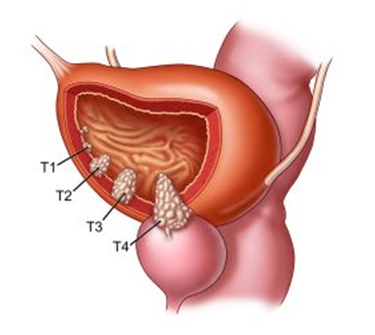What is bladder preservation and who is eligible for bladder preservation?
Can we avoid surgery in bladder cancer?
Complete removal of the urinary bladder, prostate which is also referred to as radical cystectomy is the traditional standard in patients with muscle involving bladder cancer. However, in the last few decades, certain groups of patients can be treated with radiation and chemotherapy and can achieve a cure without the need for the removal of the urinary bladder. This is usually done after complete transurethral resection of the bladder tumor. The trimodality treatment which is a combination of cystoscopic resection of bladder tumor, radiation therapy to bladder and chemotherapy is considered for a significant proportion of patients of bladder cancer in the best centres worldwide.
This approach is referred to as bladder preservation where the patient’s native bladder is preserved and there by the patient can micturate naturally. Although this has been extensively tested, it is now considered as an alternate standard for a select group of patients. The patient selection for this type of treatment requires a multidisciplinary approach by a team consisting of urologists, radiation oncologists, medical oncologists, pathologists and radiologists. Patient compliance for surveillance of the urinary bladder is also taken into account during this approach.
Radiation therapy for bladder cancer is a challenging treatment due to continuous alteration of bladder volume, shape and size. Precisely that is the reason for the requirement of daily image guidance to treat bladder cancers with radiation therapy. Daily image guidance consists of CT imaging on the treatment unit.
Treatment planning for Bladder cancers consists of Simulation with a pre-specified bladder protocol which consists of intake of a particular amount of water before a pre-specified interval of time. After the optimal bladder and bowel preparation, patient is taken up for a planning CT scan.
Treatment is delivered under strict daily image guidance.
The external beam radiation therapy for bladder cancers can be delivered with either of the techniques:
- 3-dimensional conformal radiation therapy (3-DCRT)
- Intensity-modulated radiation therapy (IMRT)
- Volumetric Modulated Arc Therapy (VMAT)
- Helical Tomotherapy
- Proton beam therapy
Several studies have shown that IMRT/VMAT/Tomotherapy is better compared to 3-DCRT in their ability to restrict doses to normal, healthy structures such as the small bowel, rectum and pelvic bone marrow.
Proton therapy for bladder cancer
Proton therapy is a highly sophisticated form of radiation therapy that delivers doses to the target structures and reduces doses to the surrounding healthy normal tissues. This, in turn, can reduce doses to the normal structures like the small bowel, rectum, prostate, uterus, ovaries, fallopian tubes and bone marrow. In bladder cancers, there is emerging data to suggest that proton therapy is feasible in patients of urinary bladder cancers and can potentially limit the doses to healthy normal structures as mentioned above. The dosimetric study done at our centre, shows that proton therapy can potentially reduce the dose to small bowel, rectum and pelvic bone marrow. This is extremely useful and crucial in elderly or frail patients. This technique also could be considered for patients with unusual anatomy or tumors with unusual locations. Proton therapy can also be considered in younger patients as the likelihood of development of secondary malignancies is significantly low compared to other photon-based conformal techniques such as IMRT/VMAT/Tomotherapy. It can also be used during scenarios like re-irradiation to selectively treat the bladder tumors. With proton beam therapy, the patient can maintain thei current quality of life both during and after treatment.




